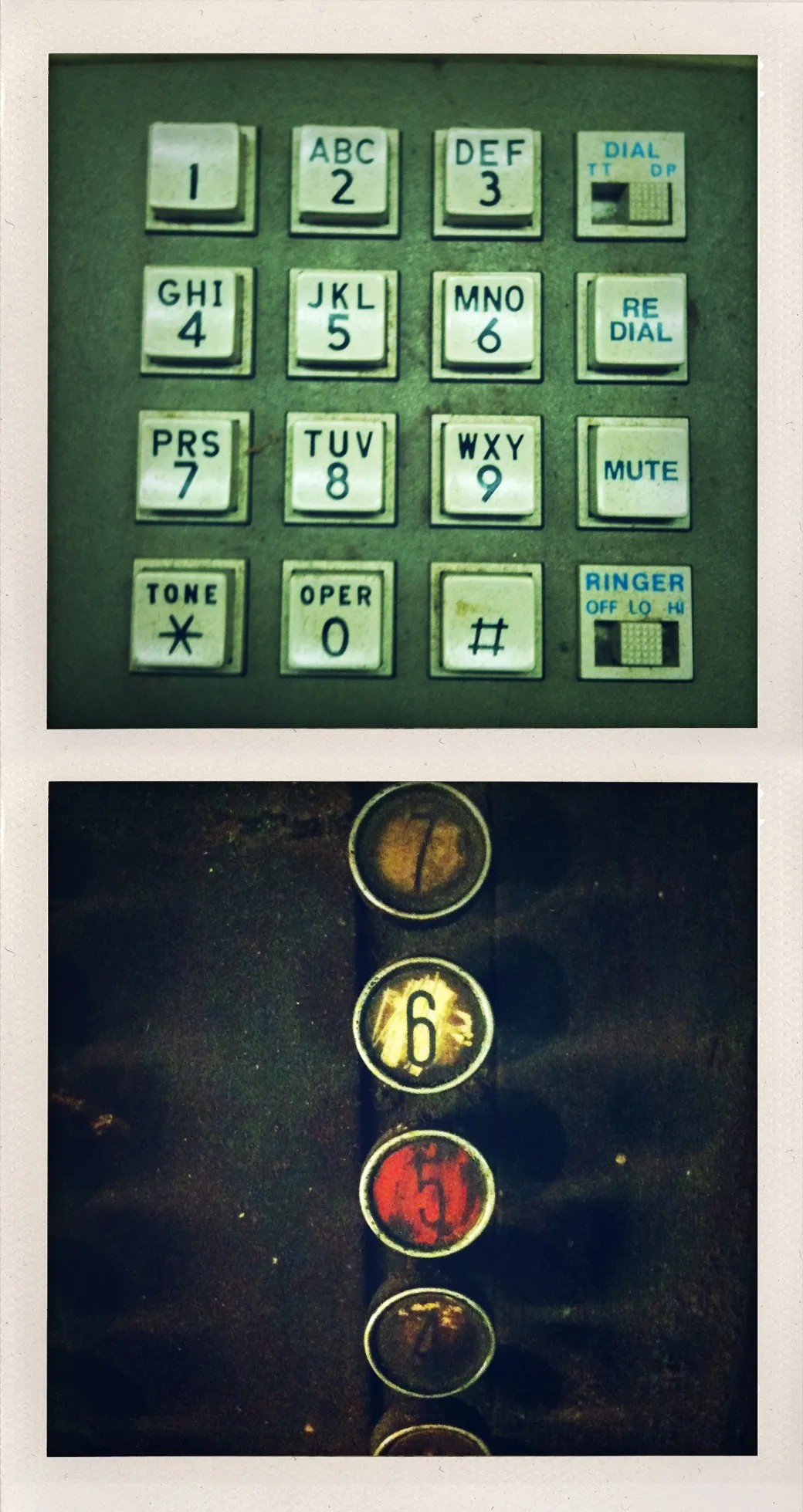Numbers Racquet

This diptych pairs a telephone keypad with elevator buttons, their combined forms creating a racquet shape: the keypad’s grid functions as the string bed, the vertical elevator panel as the handle. The title puns on “numbers racket”—the illegal lottery operation—while suggesting both devices enable illicit access: unauthorized calls, restricted floors, systems breached through numeric codes.
Both panels document worn institutional technology representing navigation through communication networks and physical space via numbered buttons. The phone keypad with its letter combinations recalls pre-smartphone dialing; the elevator’s illuminated “5” shows decades of use. These interfaces once controlled who could reach whom, who could go where—gatekeepers disguised as neutral tools. The work examines how mundane numeric interfaces mediate both legitimate and transgressive access.
Essay written: November 2025